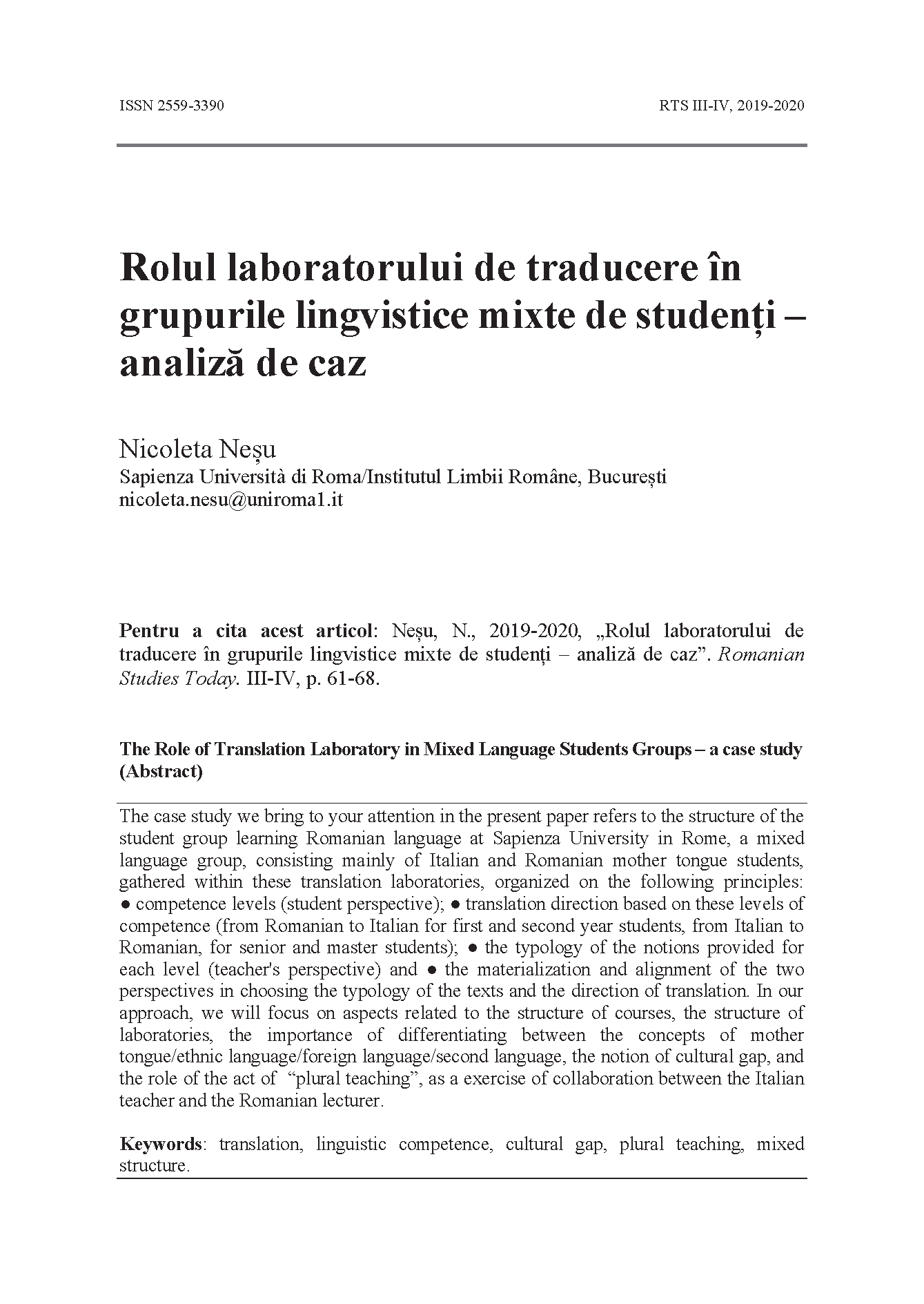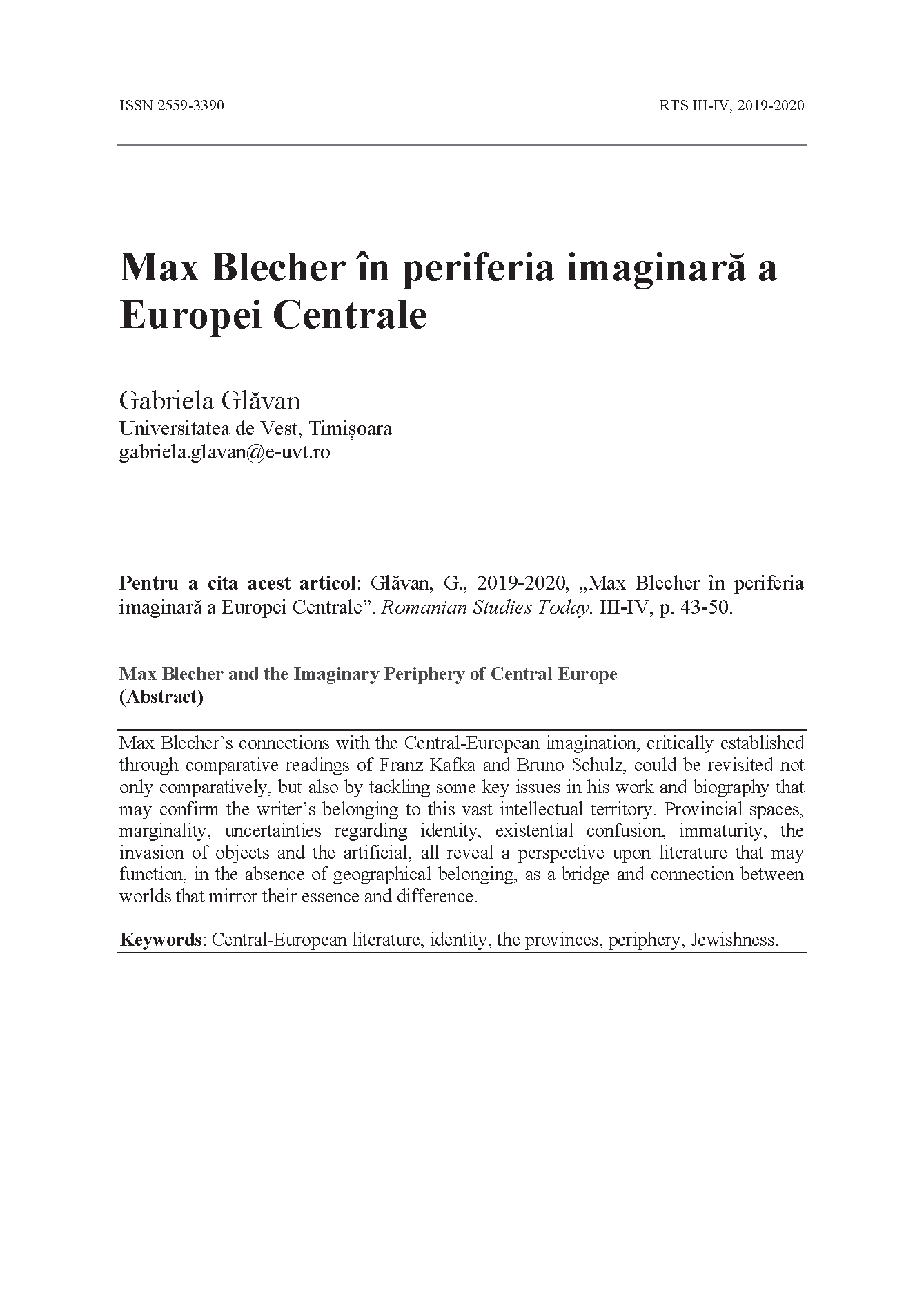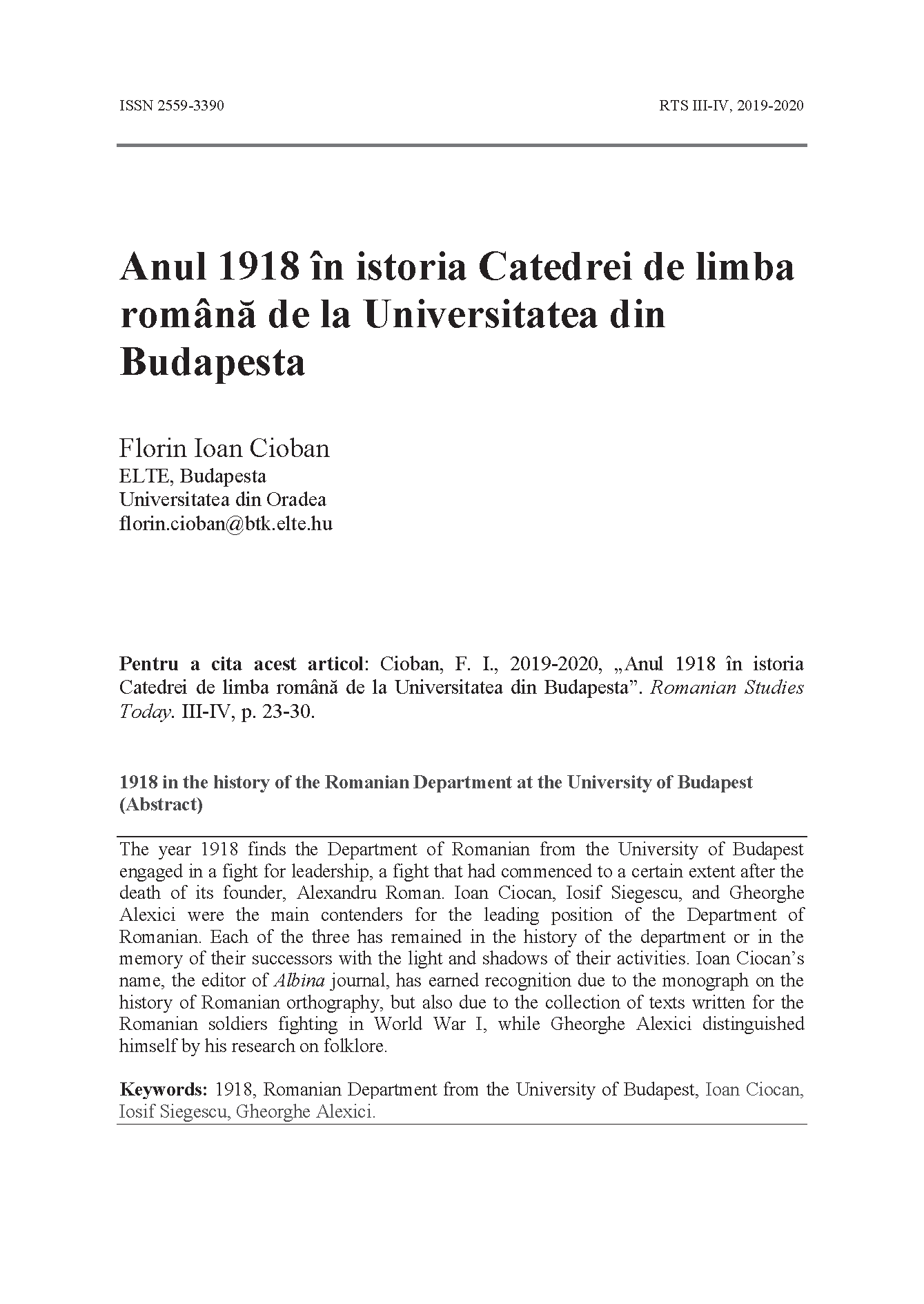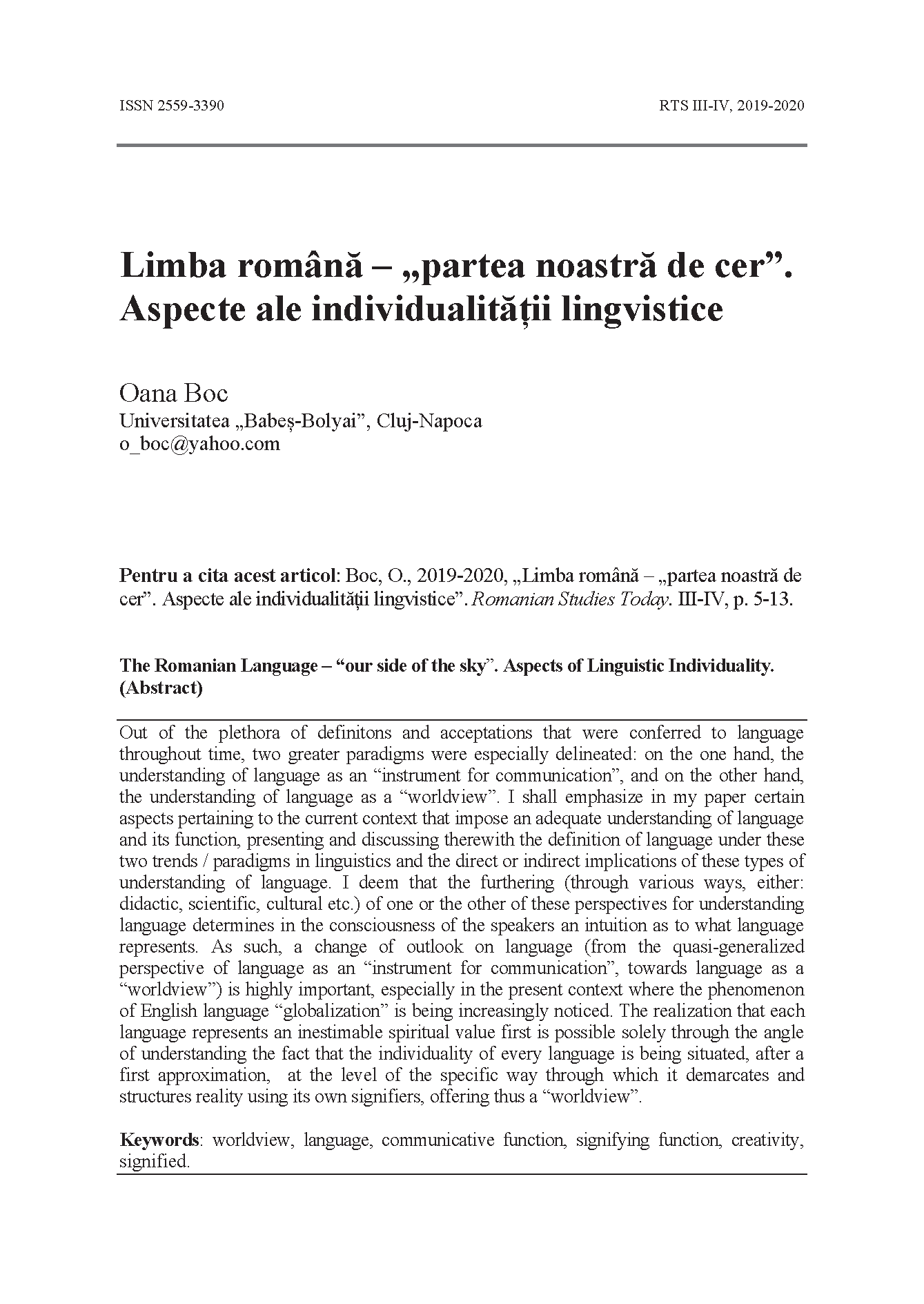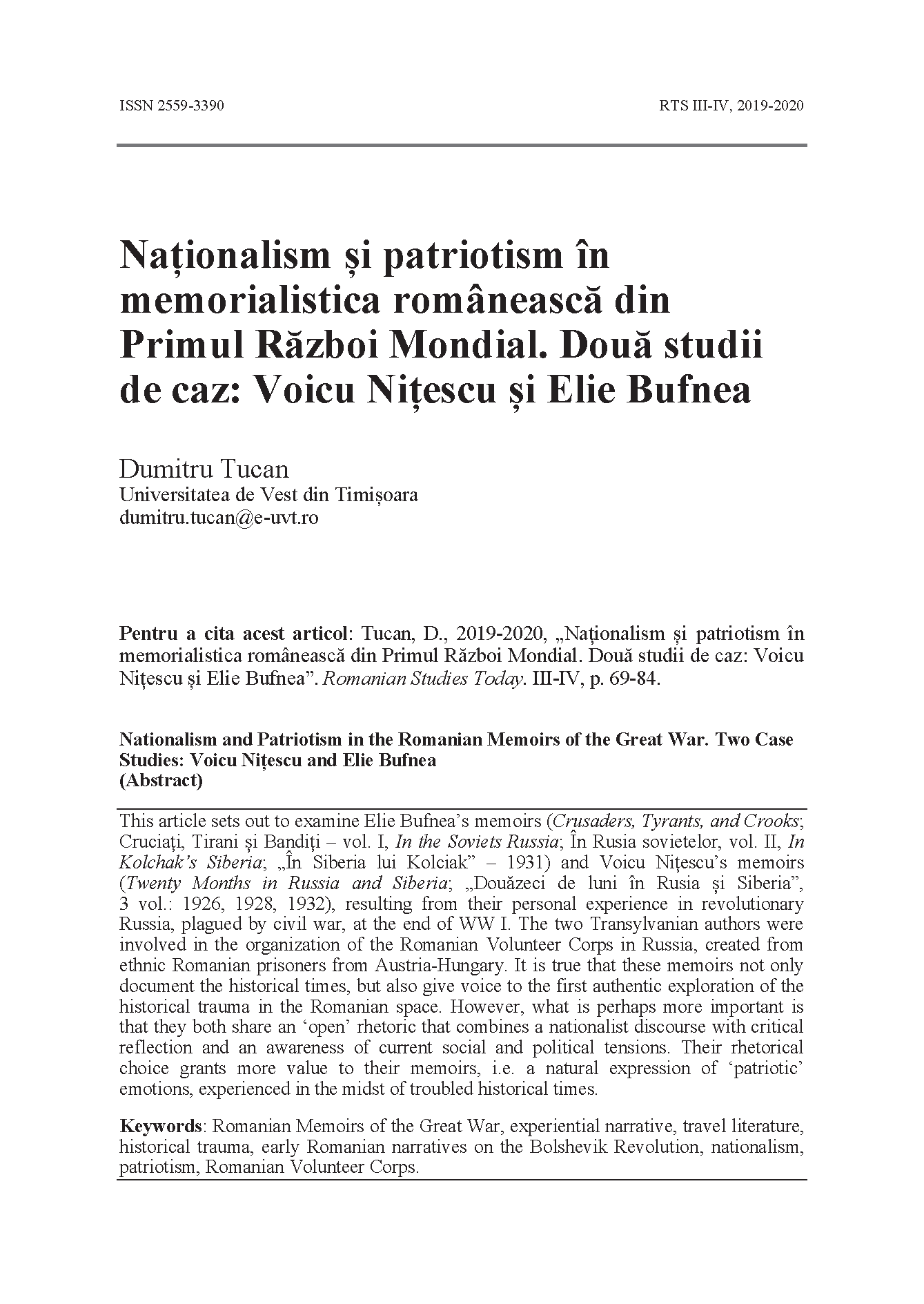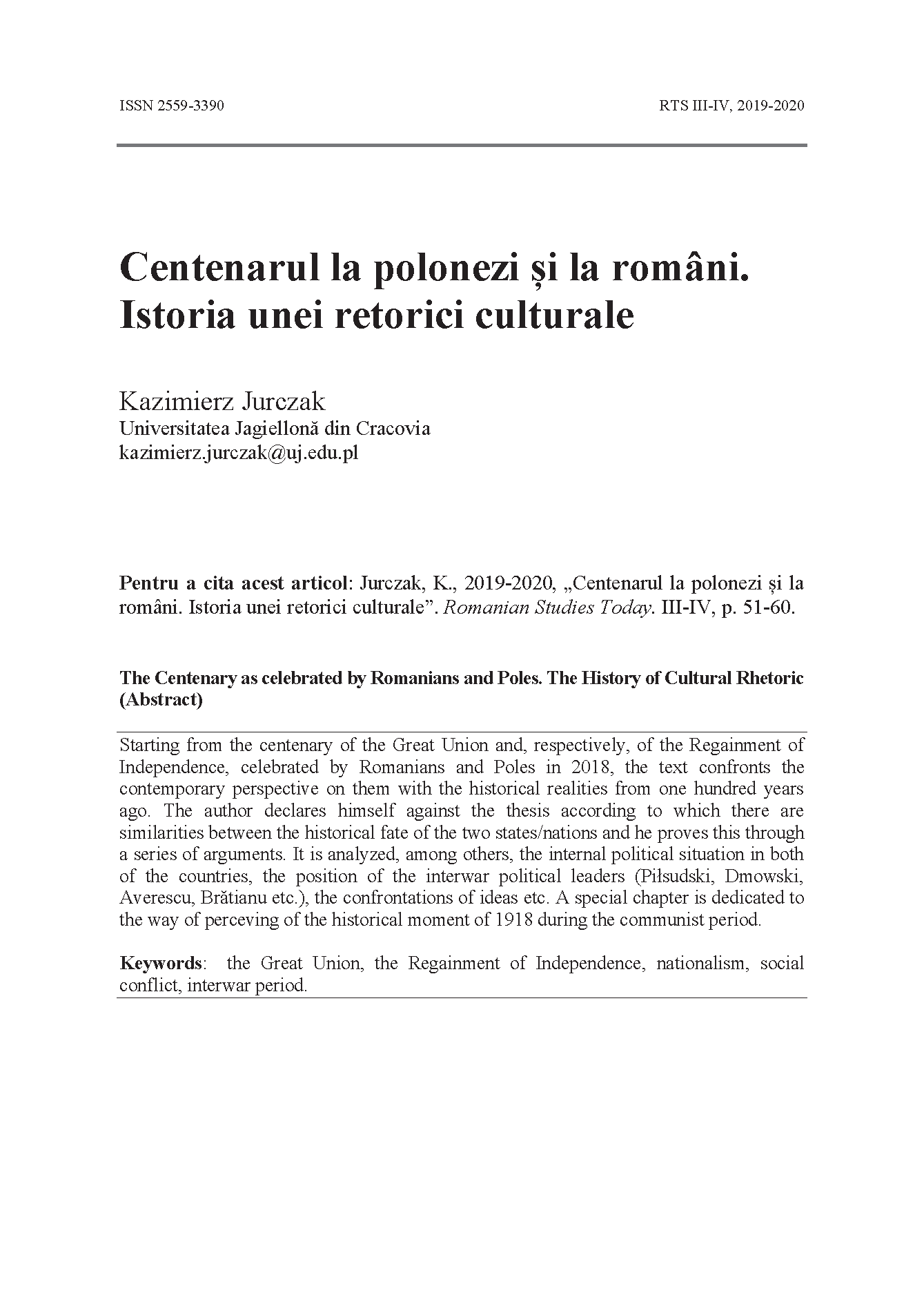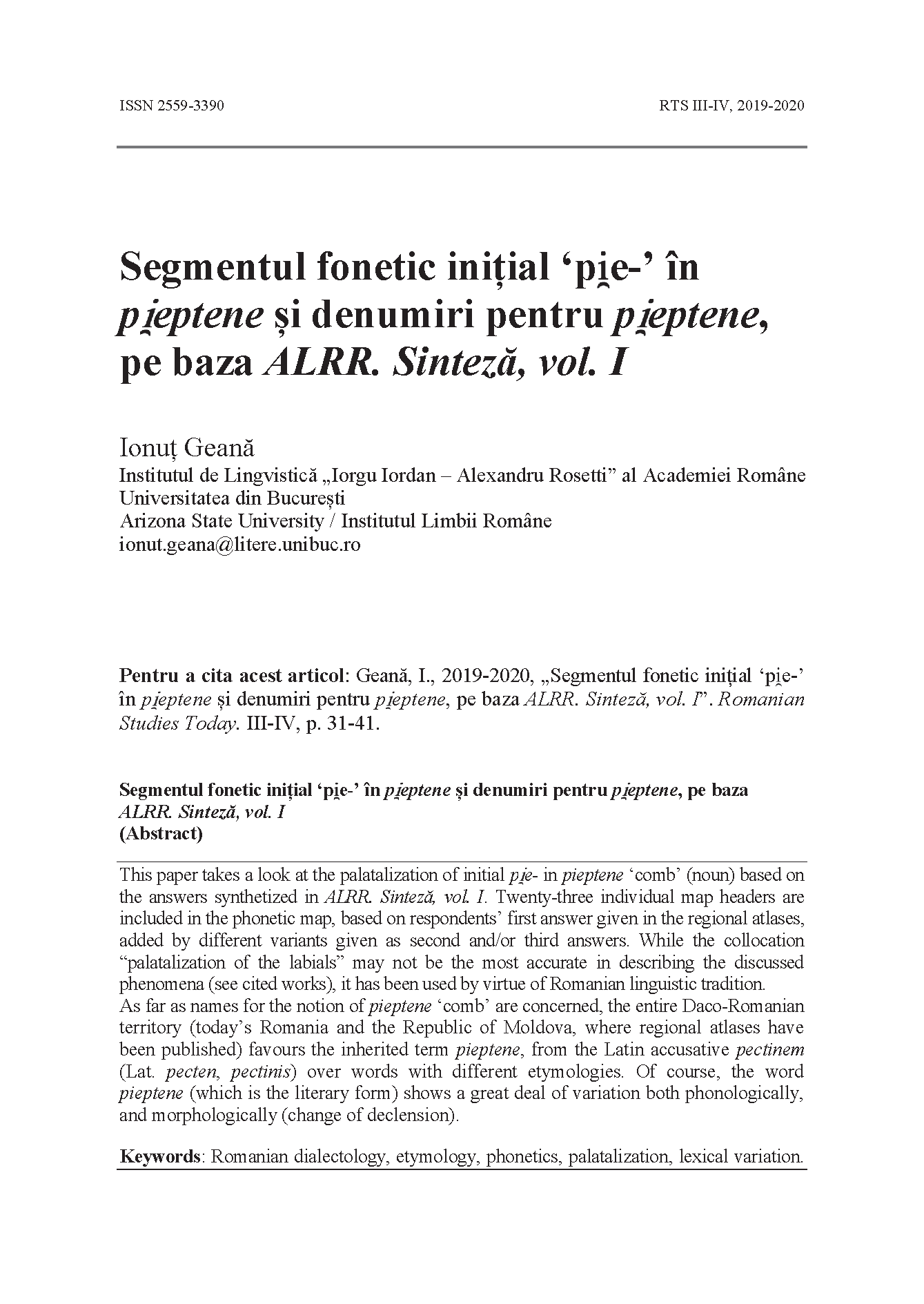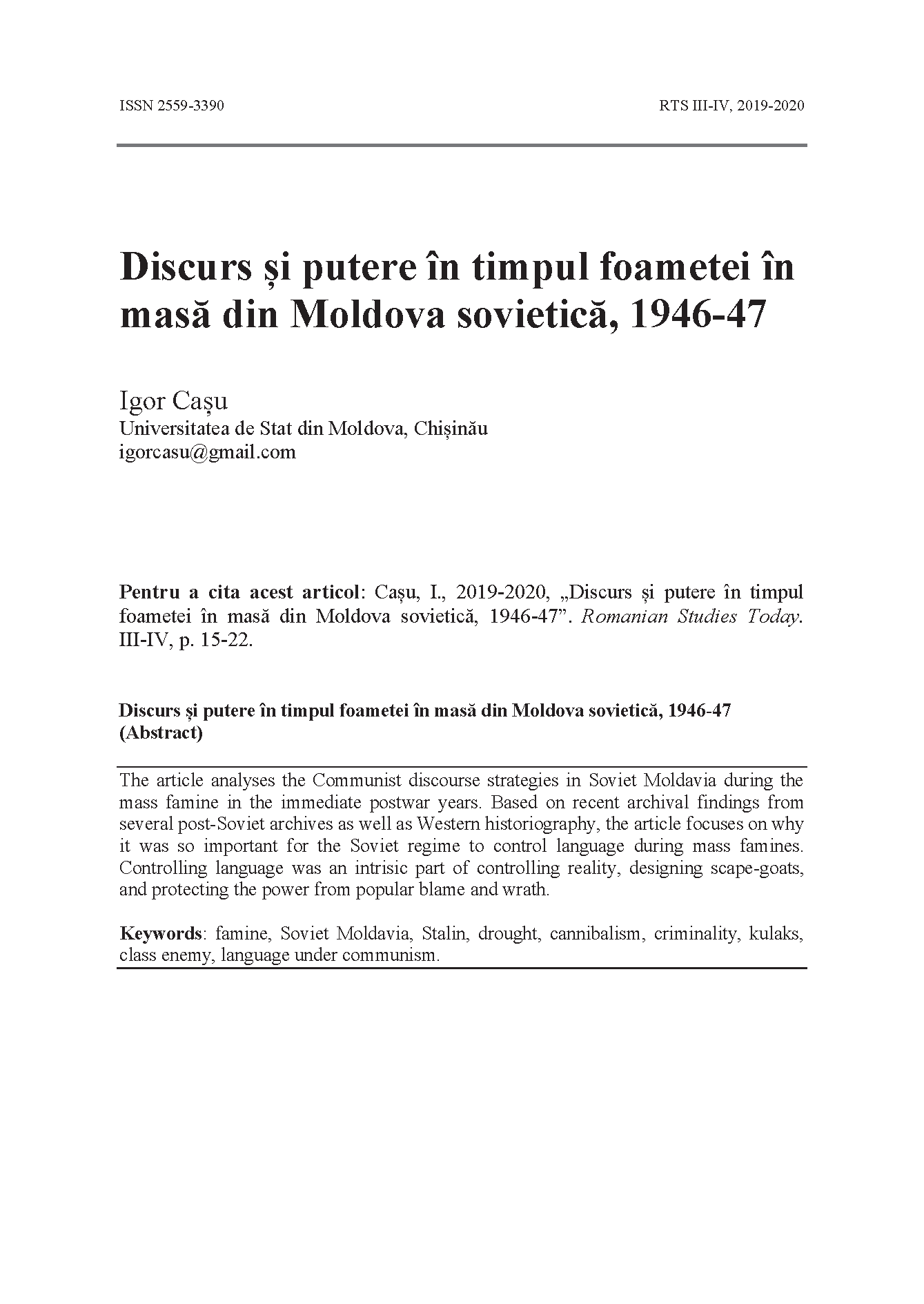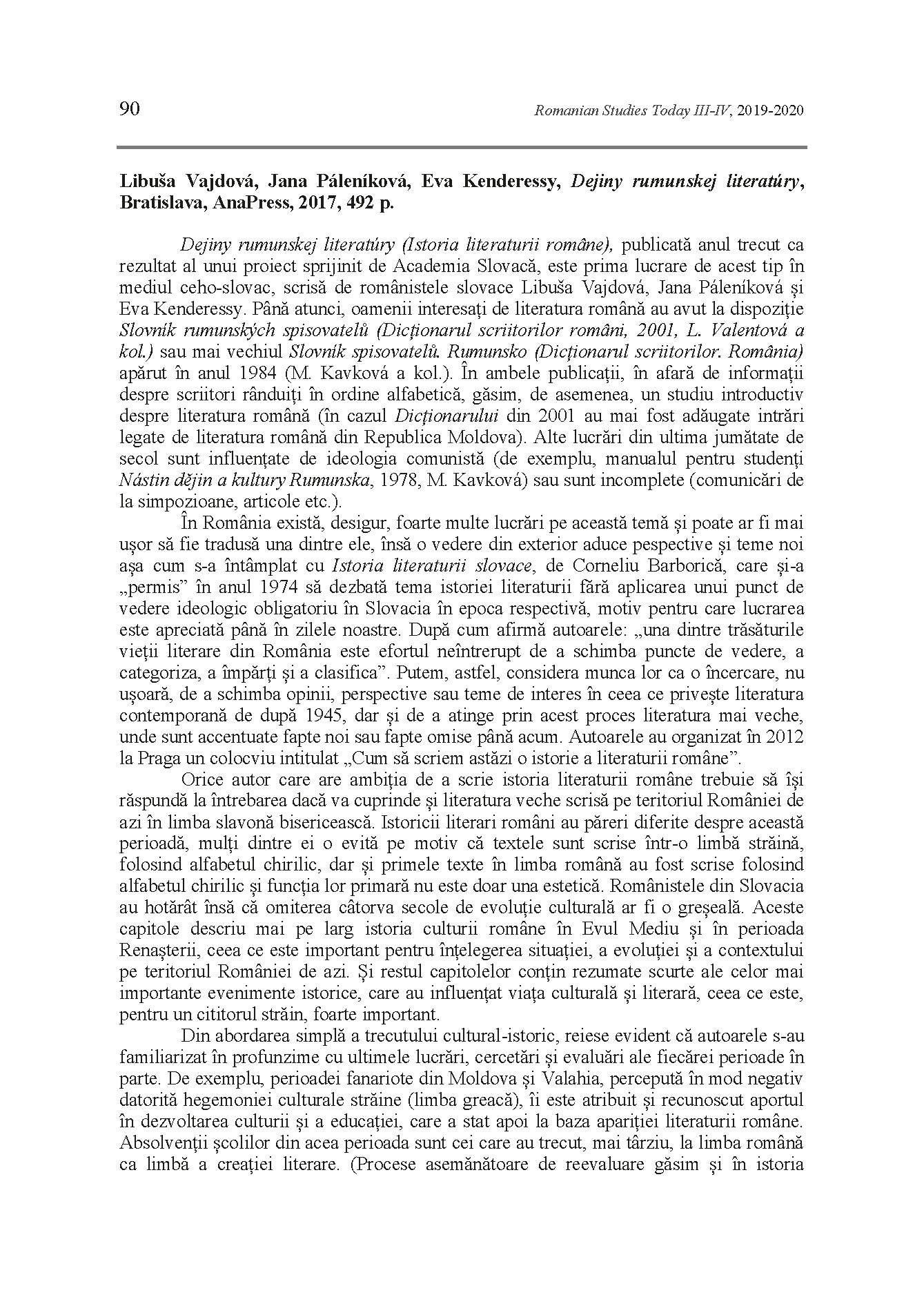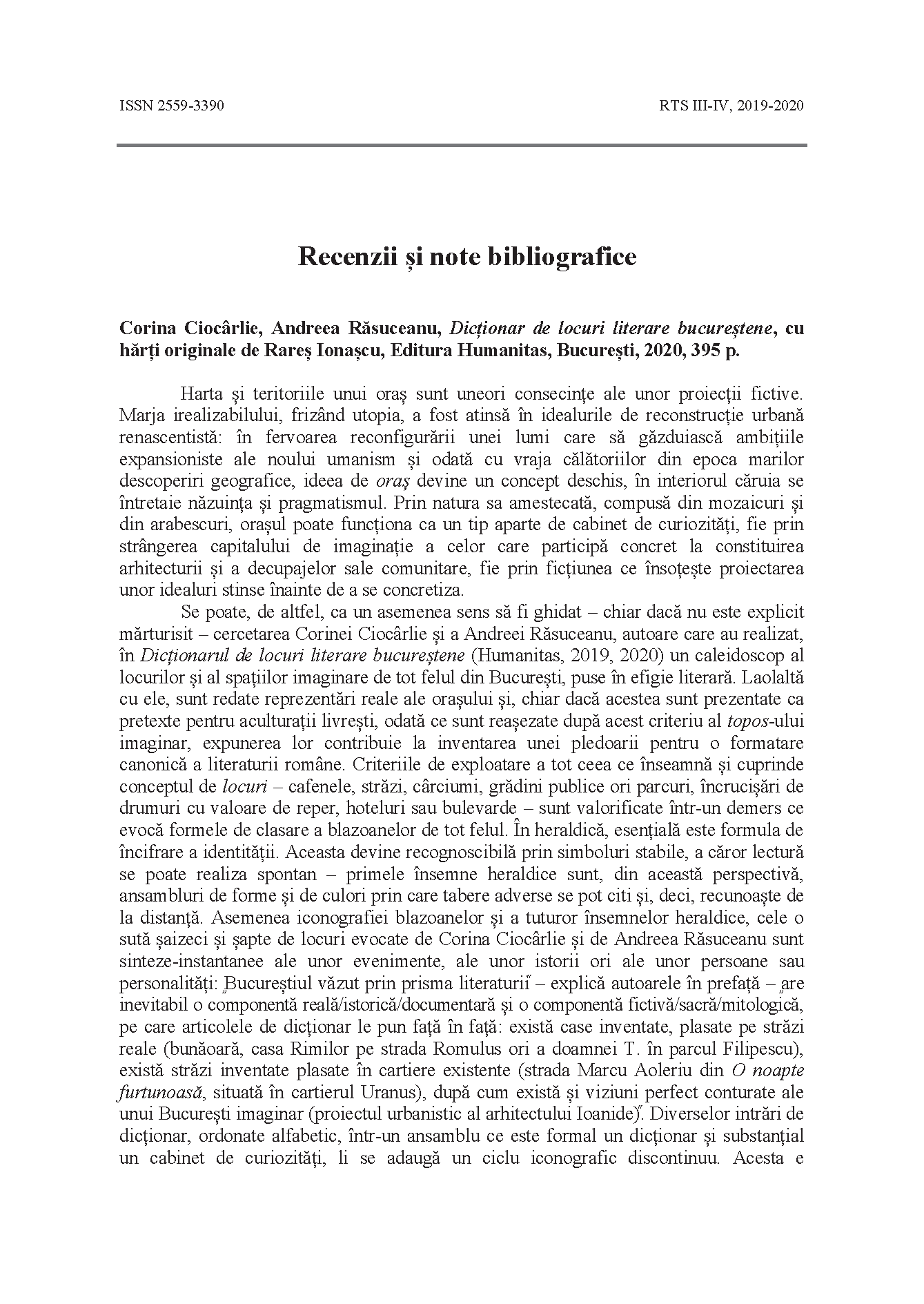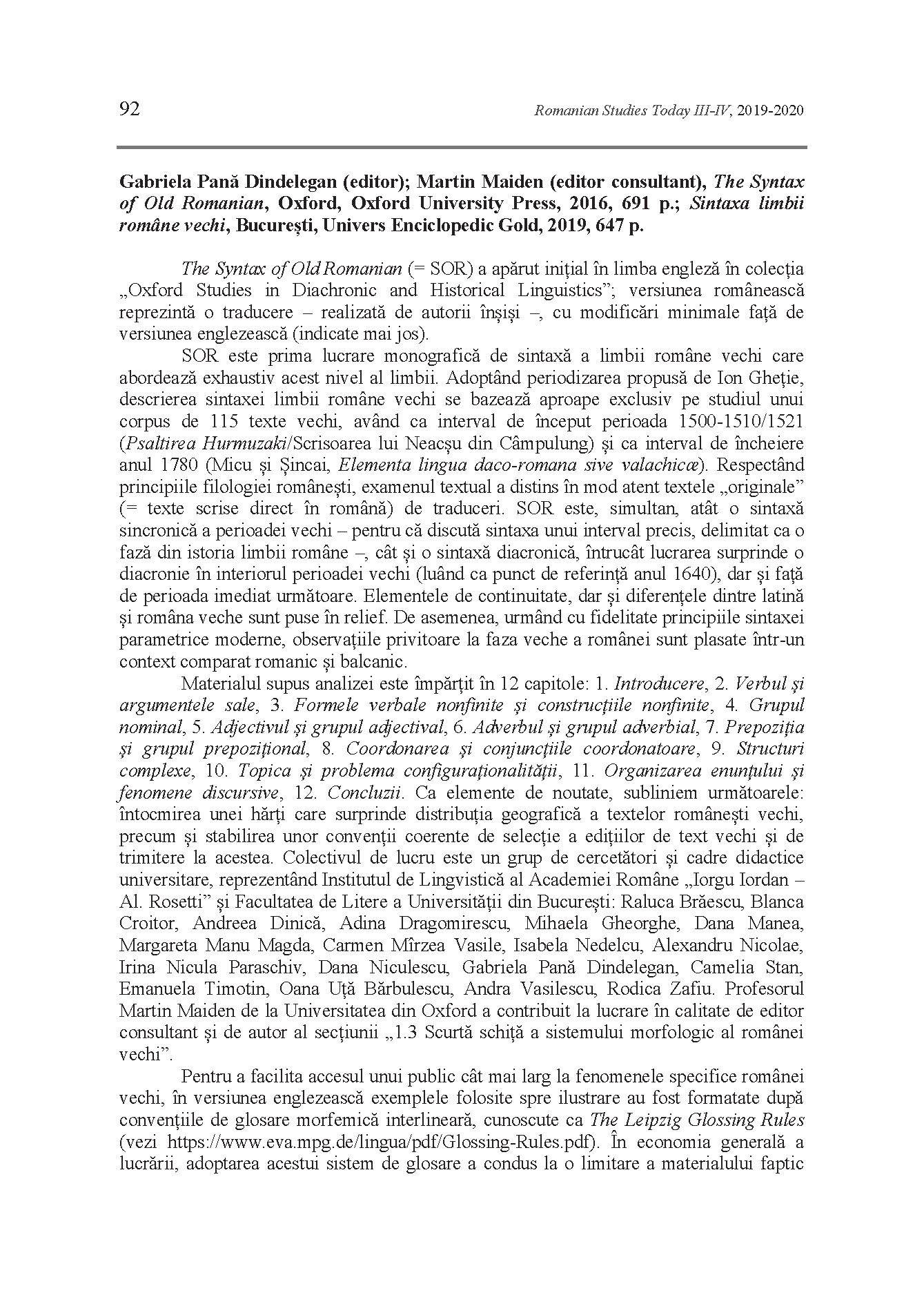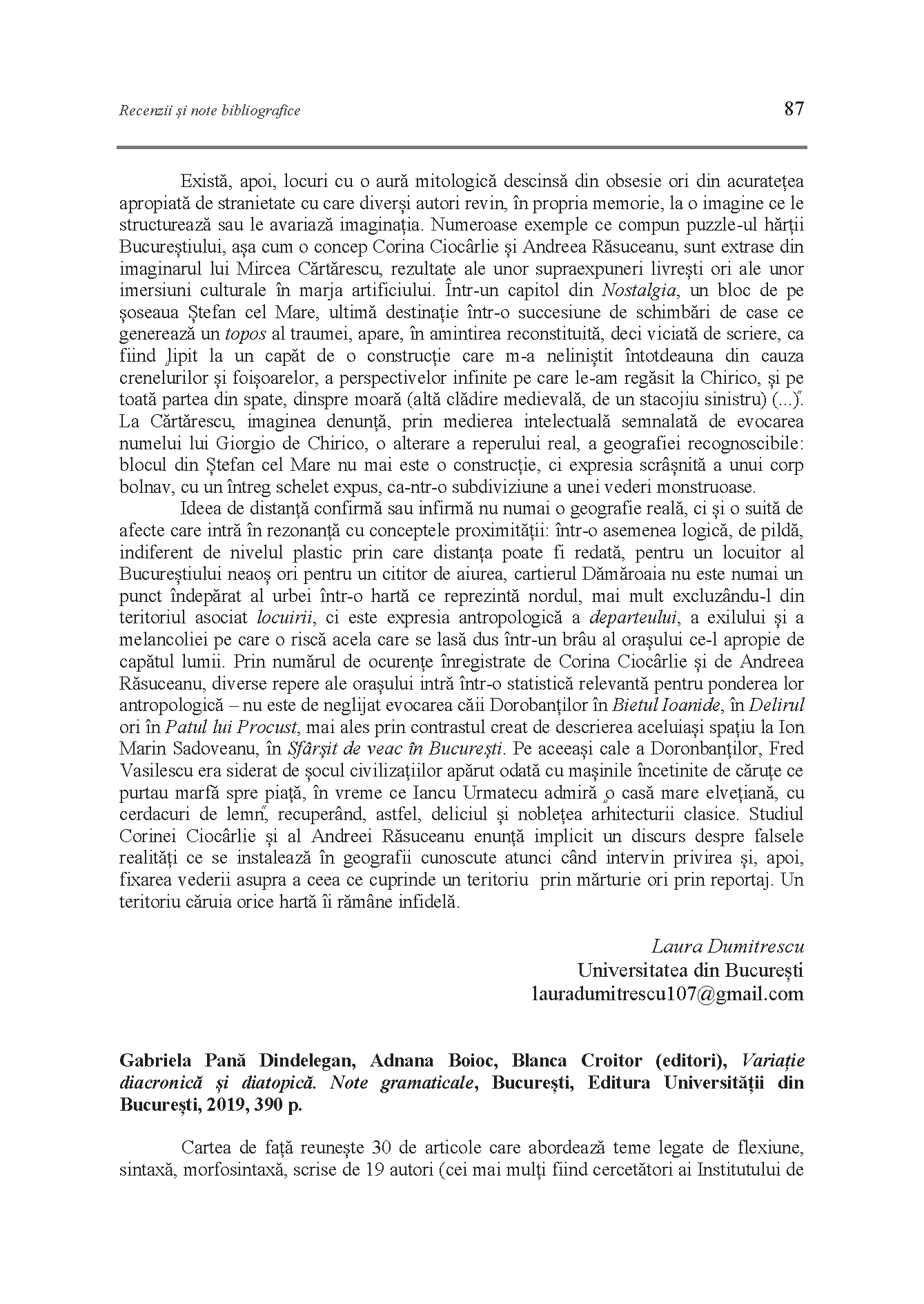Vol. 3 No. 3-4 (2020): ROMANIAN STUDIES TODAY III-IV, 2019-2020

The main domains include: the positioning of Romanian studies as integrating part of contemporary social and humanities subjects, issues related to Romanian as a foreign/non-native language. Romanian Studies Today is a journal for specialists, researchers and instructors in Romanian studies in all universities and research centres, and also for specialists, researchers and instructors in regional studies, history, anthropology, political studies or researchers in other domains with an interest in Romanian language, literature, culture and civilisation.
Published:
2024-02-12

